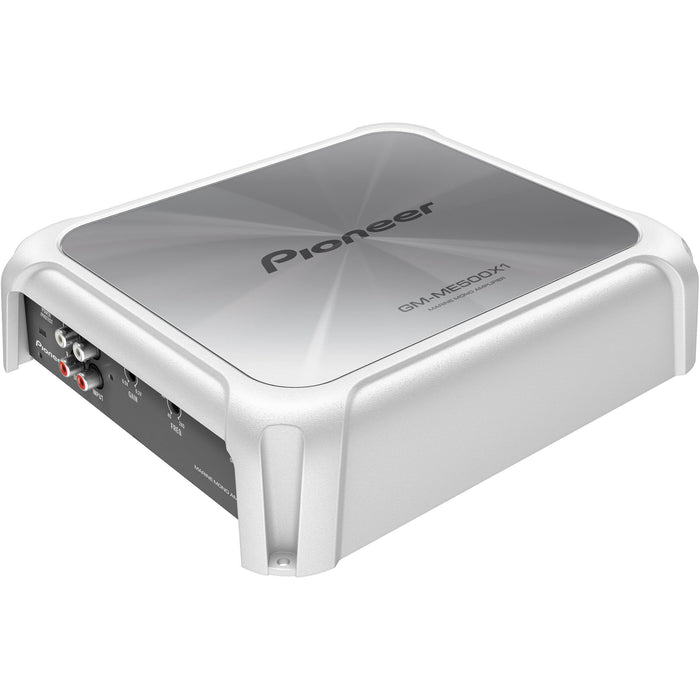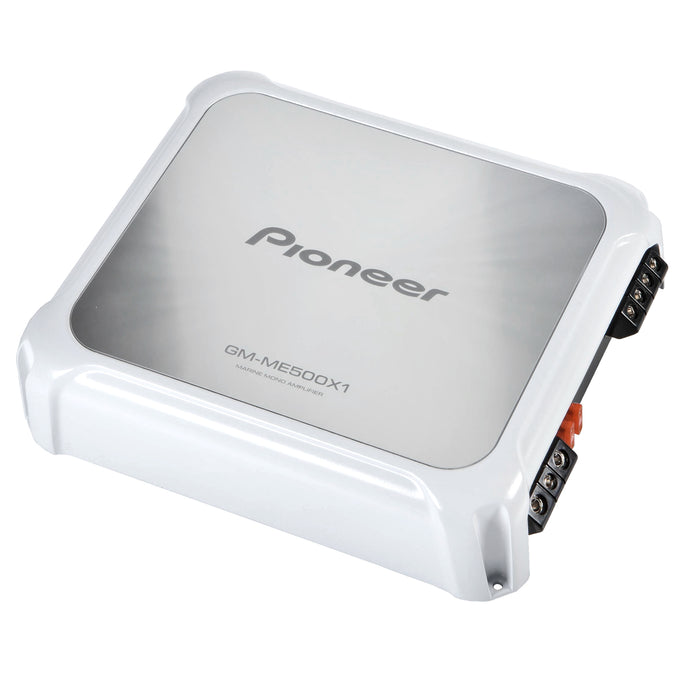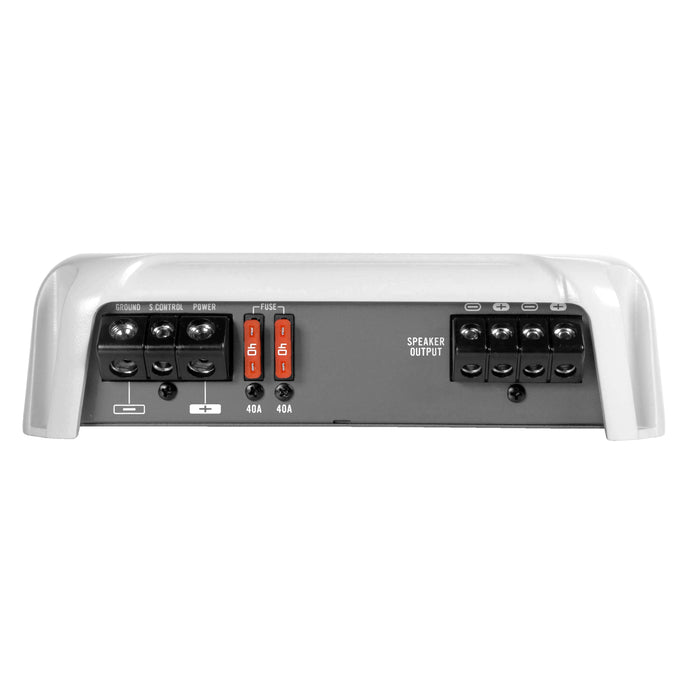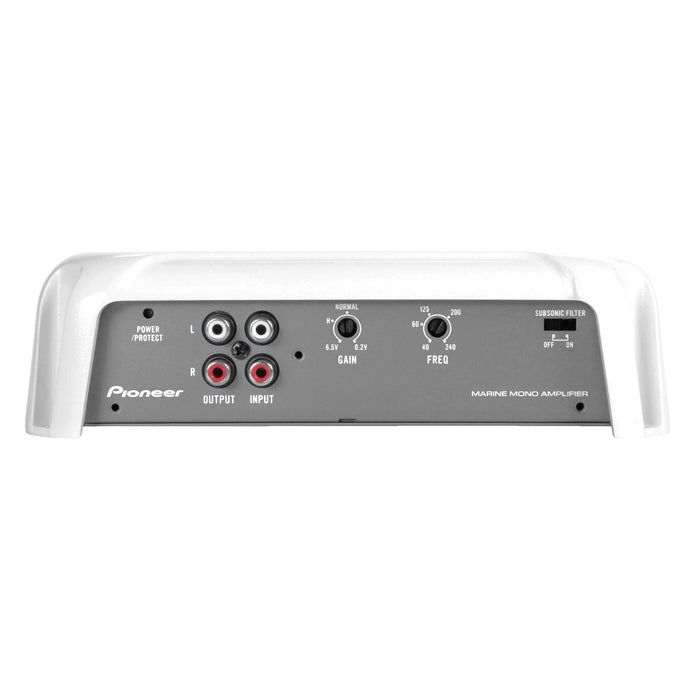
Free shipping on all US orders*
Free shipping
on all US orders*




Pioneer's GM-ME500X1 is a Marine grade Class-D digital amplifier specifically designed for the marine environment, including features such as special painting, protective covers for the side panels, and RCA terminal covers.
To prevent circuit shutdown, Pioneer's GM-ME500X1 digital amplifier circuit includes a "Protection Control System" that senses its internal temperature and automatically moderates input level accordingly. Stable, durable circuitry lessens the risk of high input power for the unit to achieve a 1 Ω connection. This design enhances the flexibility to connect multiple subwoofers to a system.
For extra flexibility, easy installation is guaranteed thanks to "Automatic Signal Sensing and Turn-On", which automatically detects an input signal and turns the amplifier on and off when connected via the speaker line input.
Variable Low Pass Filter (LPF) means you can adjust the audio frequency more according to the subwoofer characteristics and personal listening preferences. The GM-ME500X1 also includes a wired Bass Boost Remote Control.
The GM-ME500X1 has a sleek design thanks to its white cosmetics and hairline top plate enhancing the high quality sense of design and a total of 1600W.
Specs:
CEA-2006 Compliant: Yes
Ingress Protection: Conformal Coating
Allowable Load Impedance: 1 ohm to 8 ohm allowable
Avg Current Consumption (amps x #ch): 2.4 A x 1-Channel - 4 Ohm / 5.7 A x 1-Channel - 1 Ohm / 3.6 A x 1-Channel - 2 Ohm
Continuous-Power-Output: 300 W x 1-Channel - 4 Ohm / 800 W x 1-Channel - 1 Ohm / 500 W x 1-Channel - 2 Ohm
Crossover Network Subwoofer Channel: LPF - 40 Hz-240 Hz
Crossover Network Subwoofer Slope: -12 dB/oct.
Frequency Response – Subwoofer Channel: 10 Hz to 240 Hz
Fuse Rating: 40 A × 2
Maximum Power Output: 600 W x 1-Channel (4 Ohm) / 1600 W x 1-Channel (1 ohm)
RCA Input: 2-Channel
RMS Power Output: 1 Ohm - 800W RMS x 1 / 2 Ohm - 500W RMS x 1 / 4 Ohm - 300W RMS x 1
Signal to Noise: 75 dBA (Reference: 1 W into 4 ohm)
Speaker Line input Sensor: Yes
Subsonic Filter: 30hZ
Subsonic Filter Slope: -24 dB/oct.
THD - Subwoofer: =/< 1% ( 20 Hz to 240 Hz)
Class: D
Grounding System: Negative
Power Source: 14.4V (10.8 V to 15.1 V allowable)
Protection Control system: Yes
Rubber Covers Included: FUSE, RCA
Terminal Type: Block
Unit Weight: 6 lbs
In the box:
California’s Proposition 65 protects California consumers by requiring special warnings for products that contain chemicals known to the State of California to cause cancer, birth defects or other reproductive harm where those products would expose consumers to such chemicals above certain threshold levels.
If a product description on this site directed you to this page, the warning for this item is:
Customers with a California billing or ship to address.
California implemented new guidelines for Proposition 65 warnings, effective August 30, 2018. These guidelines were applied to make the warnings more clear and reasonable.
Learn more from the California Office of Environmental Health Hazard Assessment (OEHHA) site here.
